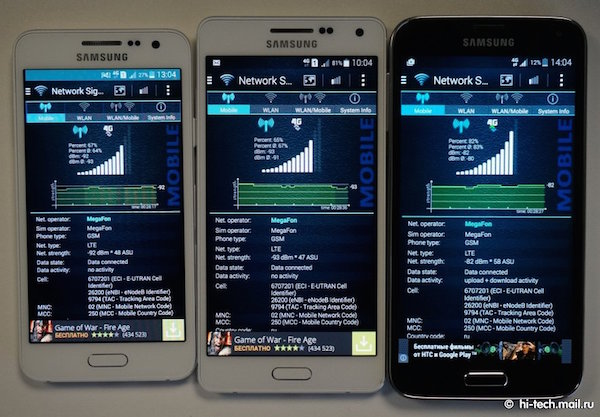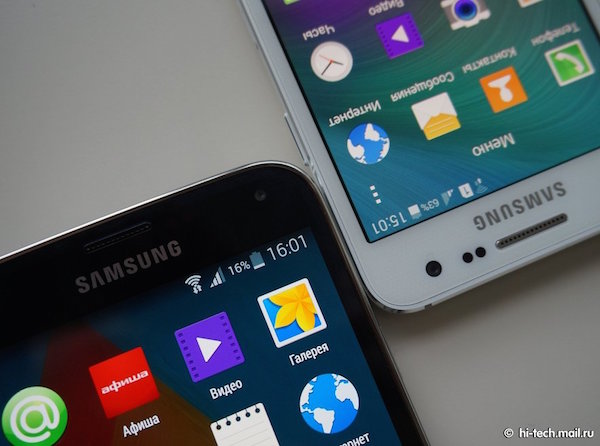For years, Samsung has stuck with plastic as a material of choice when building smartphones. Despite all the complaints and comparison with Apple’s aluminium-clad iPhones, the Korean company has stuck with plastic and there’s probably a good reason for that. According to reports, the brand new Samsung Galaxy A3 and A5 seems to have poorer signal reception compared to the plastic Galaxy S5.
According to Hi-Tech@Mail, a Russian tech website, they took the two new metal unibody Galaxy smartphones together with the Galaxy S5, and put them through some tests.
The picture above shows all three devices accessing the same mobile network. While the Galaxy S5 has a signal strength of -82dBm, the other two received -92dBm and -93 dBm respectively (the closer the number is to 0, the better the receitpion is). Since all three devices are right next to each other and are all connected to the same network, the Hi-Tech@Mail concluded that it’s probably due to the build of the A3 and A5 – another antennagate problem? Although the difference in 10dBm may seem little, being so close to -100dBm makes it very unstable and weak signal could lead to a battery drain. On top of that, the Russian website also noted that the Galaxy A3 and A5 also seems to have poorer Wi-Fi reception, but isn’t as noticeable as the mobile reception.
Should have Samsung stuck to plastic instead, or at least continue using a metal frame and plastic body combination found on the Galaxy Alpha and Galaxy Note 4?
(Source: Hi-Tech@Mail via: GSMArena)
Follow us on Instagram, Facebook, Twitter or Telegram for more updates and breaking news.




